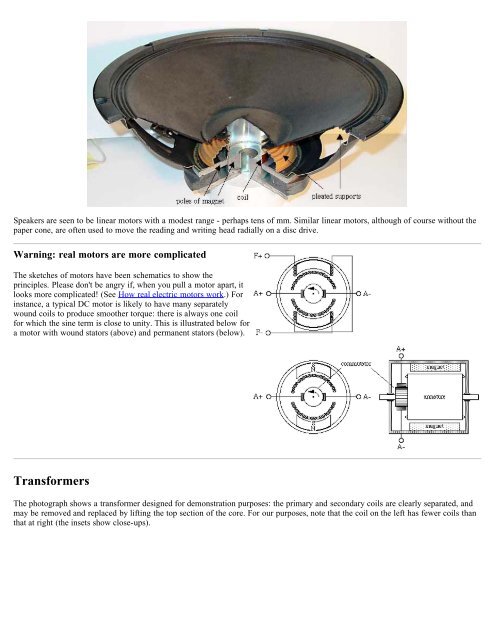How real electric motors work - School of Physics - The University of ...
How real electric motors work - School of Physics - The University of ...
How real electric motors work - School of Physics - The University of ...
Create successful ePaper yourself
Turn your PDF publications into a flip-book with our unique Google optimized e-Paper software.
Speakers are seen to be linear <strong>motors</strong> with a modest range - perhaps tens <strong>of</strong> mm. Similar linear <strong>motors</strong>, although <strong>of</strong> course without the<br />
paper cone, are <strong>of</strong>ten used to move the reading and writing head radially on a disc drive.<br />
Warning: <strong>real</strong> <strong>motors</strong> are more complicated<br />
<strong>The</strong> sketches <strong>of</strong> <strong>motors</strong> have been schematics to show the<br />
principles. Please don't be angry if, when you pull a motor apart, it<br />
looks more complicated! (See <strong>How</strong> <strong>real</strong> <strong>electric</strong> <strong>motors</strong> <strong>work</strong>.) For<br />
instance, a typical DC motor is likely to have many separately<br />
wound coils to produce smoother torque: there is always one coil<br />
for which the sine term is close to unity. This is illustrated below for<br />
a motor with wound stators (above) and permanent stators (below).<br />
Transformers<br />
<strong>The</strong> photograph shows a transformer designed for demonstration purposes: the primary and secondary coils are clearly separated, and<br />
may be removed and replaced by lifting the top section <strong>of</strong> the core. For our purposes, note that the coil on the left has fewer coils than<br />
that at right (the insets show close-ups).
















